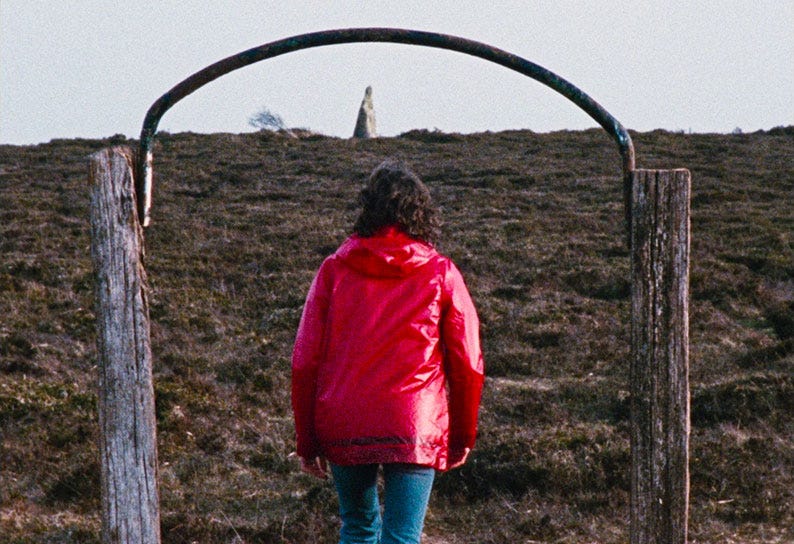TITAA #48.5: Stone Tape on a Stone Island
Creepy "Enys Men" - Midjourney Tuner - "Real-time" Images - Game GPTs - Weirdness Links - Simulated Agents - UNIDs - Collage!

Two weeks ago I wrote about the magic radio poetry in Cocteau’s Orpheus, and here’s another weird film with a strange radio that’s very much worth a look: Enys Men by Mark Jenkin. “Enys Men” is Cornish for “stone island.” This film is a poetic visual experience, which hardly translates to a plot description. Jenkin, in interviews and on the British Film Institute site, cites Robert Bresson saying, “I’d rather people feel a film before understanding it.” As a ghost story, it makes fine fare for the mid-month esoteric & weird section I’ve added to the newsletter!
A woman (“the volunteer”) is staying alone on a rocky island, every day visiting a small white flower growing on the cliff; she takes a temperature measurement and records in a notebook: “No change.” In a house lit by candles and powered by a small generator, she talks to someone on the radio occasionally. She tells them, “I’m not alone.” Does she mean the ghosts of history here, or her memories? because she is patently alone. We later realize the radio is not a straight-forward device, sometimes broadcasting odd voices and maybe from different times. We start to see glimpses of others: a young woman (herself? her daughter?), a fisherman’s face, some miners’ ghosts, women in old-fashioned dress. As a fateful May Day arrives, young girls in white dance and sing in front of the ruin of her former house.
The island history we get in glimpses: an old mine that she superstitiously drops a rock in every day, a ruined factory, memorials for men lost at sea, a standing stone that she watches from her door and from which she watches her house. The woman finds things “out of time,” like a yellow fisherman’s slicker in the water, a white flower by the stone. A fisherman comes to deliver supplies—or does she remember him coming? Suddenly the flower changes: lichen grows on it. She finds lichen growing on a lurid scar on her own stomach. The standing stone moves.
Various reviewers and Jenkin himself mention “stone tape theory,” the theory that objects or places can record and play back the past, a possible explanation for ghosts. The ghost story film “The Stone Tape,” which is the origin of this idea, is listed in his cinematic influences list on the BFI site. Certainly folding and wandering time is at the center of the woman’s experiences; Jenkin even plays film backwards in some clips, much like Cocteau did for his eerie effects in Orpheus. Jenkin says,
“There’s a very human fear of time breaking down, and film is the only artform that can really communicate that breakdown. It can depict a very real version of time… but also the dream-state, where we jump around in time and space in our minds. … All the films I really love are preoccupied by that sense of time.”
More: If you want spoilers, here is some theorizing about “what it all means” and the ending, despite acknowledging it’s not meant to be read so. It is eerie and weird by design. 👉 Here’s a good take on its influences and eerie films more generally from BBC Culture, with some good citations (Fisher on the “Weird and the Eerie”, for instance). 👉 For a game with a somewhat similar vibe and related scenery, try the lovely Dear Esther. 👉 And for another good dramatic use of white flowers, a strong rec for the lichens and flowers in the recent animated Scavengers Reign on HBO.
There are tons of new links and tools below, including the new subscribers’ only Esoteric and Weird section! TOC (will be in-page links on the web view):



